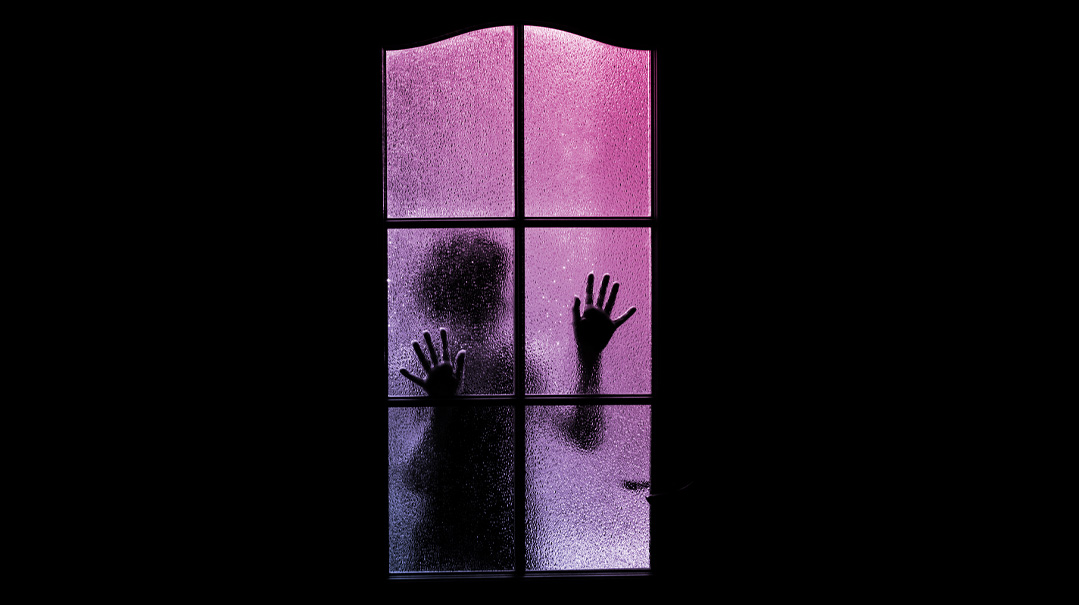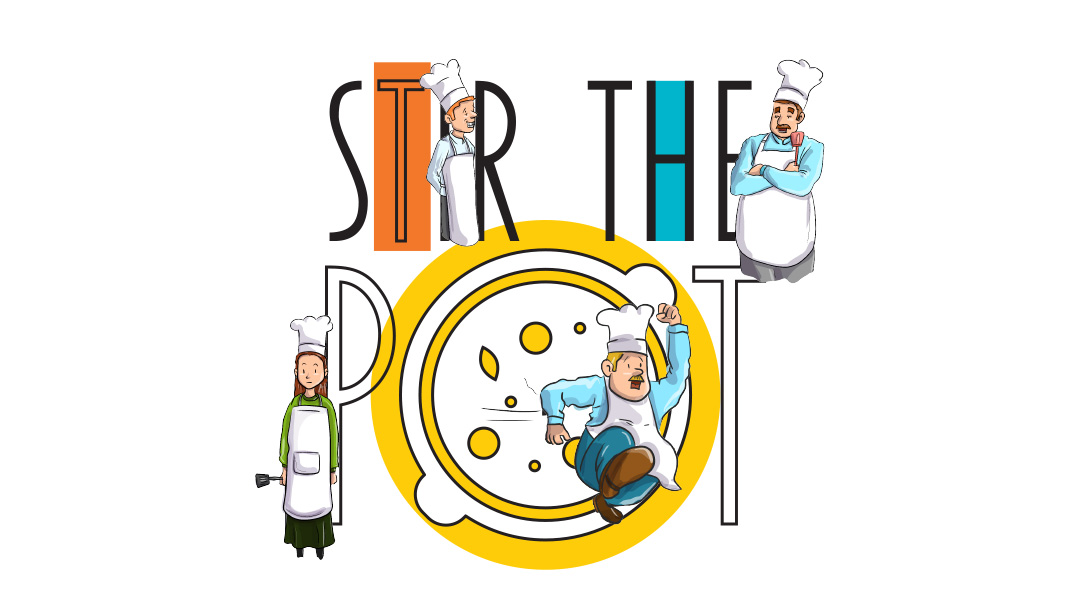Freeze Effect

How to recognize when past trauma is hampering the present — and how to find the path to healing

Esti is a 56-year-old grandmother, but she has the voice of a small child. It’s incongruent with the lines etched on her forehead and is a surprise to those who meet her after speaking with her on the phone.
The voice is congruent, however, with Esti’s adult personality. She’s child-like in her insecurities, always full of self-doubt about her social skills and her professional competencies. Objectively, she’s smart, creative, and kind, yet she feels perpetually inadequate and rejected. She has a strong need to please others, especially those in authority, and is afraid to assert herself. She’s still drawn to the activities, styles, and possessions of her childhood. Esti is a young girl living in a middle-aged woman’s body.
Esti’s stunted internal world is the result of “developmental trauma” — a term used to describe chronically chaotic, unstable, and/or hurtful home environments during childhood. Trauma can include being raised by parents who suffer from addiction, mental health disorders, or emotional dysregulation; living through war periods, natural disasters, or a high-conflict divorce; suffering through the sickness or death of a loved one; being physically or verbally abused or witnessing a loved one being abused; or being consistently ignored, neglected, or excessively criticized.
Developmental trauma is not the result of a one-time event, but rather the consequence of repetitive, usually chronic, overwhelming experiences taking place over a period of years.
When there’s trauma or unmet needs during childhood, it can sometimes cause a “freeze effect” in which development of part of the personality freezes in time, instead of continuing to unfold toward maturity. The sufferer feels the disconnect between her chronological age and the qualities of her personality but doesn’t know how to fix it.
Stages of Healthy Development
Our adult lives are like maps of our childhood developmental histories. Our health, behaviors, thoughts, and feelings are the product of both our genes and our journeys. Once we become familiar with the signposts of typical developmental experiences and reactions, we can better understand our past and how it impacts the way we behave in the present. We may even be able to pinpoint when and why a part of ourselves got “frozen” instead of blossoming into full maturity.
Our histories are all uniquely tailor-made but, generally speaking, people who grow up free of significant traumatic experiences usually follow a fairly straightforward path.
The normal dependence, vulnerability, and insecurity of earliest childhood gives way to a confidence and optimism that promotes curiosity, individuality, social competence, and emotional regulation by middle childhood.
By adolescence, the child seeks healthy relationships and activities, and is comfortable both inside and outside of the home environment. He or she steps enthusiastically into increasing independence, and is able to make decisions, chart a course for the future, and pursue it.
Unless the child has significant inborn mental health challenges (such as debilitating anxiety disorders, severe ADHD, major depression, bipolar disorder, or other conditions), or serious physical health limitations, he or she enters adulthood emotionally stable, healthy, and ready to take on the tasks of adult life.
The Bumpy Path of Trauma Survivors
Those who experience developmental trauma usually experience many bumps along the way. Some trauma symptoms can appear in early or middle childhood, and they may be misdiagnosed at first. For example, some children suffering from traumatic stress are misdiagnosed as having ADHD because symptoms of hyperactivity, impulsivity, distraction, and emotional dysregulation are characteristic of both syndromes. Some children are withdrawn and anxious in response to their environment rather than to their genetic profiles.
By adolescence, many traumatized teens are displaying flight symptoms such as drug and alcohol addiction, gambling issues, eating disorders, self-harm, and other numbing activities. Many have low self-esteem, troubled peer relationships, poor boundaries, panic attacks, or significant social and/or academic withdrawal. Some have intense rage or anxiety. People who are hypersensitive to criticism, who have signs of having received insufficient attention, love, or recognition are often survivors of emotional and/or physical neglect or abuse.
Unless developmental trauma is treated, the symptoms continue into adulthood, though there may be a period of reprieve during the shidduch stage, when people often pull themselves together temporarily to “look good.” Unfortunately, the trauma symptoms often reappear in spades shortly after the chuppah.
As adults, developmental trauma survivors may have trouble holding down jobs, keeping friendships, staying married, parenting, taking good care of their health, managing stress, or otherwise carrying out the responsibilities and tasks of adulthood.
It’s important to note that all these dysfunctions may arise out of inborn brain styles, poor parenting, and mental health conditions; the presence of these symptoms doesn’t prove that trauma occurred. Rather, when trauma occurs, these symptoms often develop.
Interestingly, the fact that one recalls a positive childhood without adverse experiences doesn’t necessarily indicate that trauma didn’t occur. If there are any trauma symptoms (see sidebar), it might be indicative of buried trauma. Symptoms are the body and mind’s way of remembering, so the symptoms may be the replaying of mental and physical reactions to traumatic events. On the other hand, the fact that painful events definitely did occur in one’s childhood doesn’t prove that there’s developmental trauma. People can survive tragedy, loss, abuse, and other adverse events without developing trauma symptoms.
Healing the Past
Many of us — perhaps most of us — are the embodiment of some form of childhood trauma. Our parents were only human, and we lived among equally human siblings, peers, educators, relatives, and members of society. It was inevitable that we’d get hurt along the way.
However, we all suffer varying degrees of residual pain. Severe school bullying leaves a different mark than that penned by living with a relentlessly teasing brother. Physical abuse causes far greater damage than regular “poor” parenting.
Many of us will be able to heal, learn, and grow simply through intentional self-help: being open and responsive to feedback from others and reading books and attending classes on communication, anger-management, or overcoming anxiety. In this way, we can make up for our deficits and defenses, overcoming, for the most part, the effects of inhabiting an imperfect world.
When a person is symptom-free, therapy isn’t necessary or helpful. Instead, normal channels for growth and development such as Torah study, meditation, personal growth programs, and self-help literature will help a person continue to evolve and acquire important emotional, spiritual, and relationship skills.
However, professional help is usually necessary for the full recovery of those who experienced deeper wounding. In general, the more severe the trauma, the longer it takes to achieve significant healing. One to three years of regular therapy is typical, but there are clients who will spend decades in recovery from the most severe childhood abuse. Just as each trauma survivor is different, so is her journey to full healing.
Take Tami, for instance, who grew up with a mother who suffered from untreated borderline personality disorder. Her mother was a victim of childhood abuse herself, but in adulthood, as so often happens, she became the abuser. She was subject to unpredictable fits of rage over young Tami’s small, normal misbehaviors, but alternated her tirades with equally unpredictable periods of genuine warmth and intimacy toward the confused youngster.
Understandably, Tami grew up chronically hypervigilant: Was Mom in a good mood today or would something likely set her off? Since Mom’s moods had nothing to do with Tami’s behavior, the child could not make sense of the relationship. Was she a horrible little girl as Mommy often accused her of being? Or was she a darling child, as she was sometimes called? Would she be beaten for some crime she didn’t even understand or offered treats for being “so pretty”?
Unable to trust her primary caretaker, Tami became unable to trust anyone. She had plenty of trouble in her friendships as she grew up, as she interpreted the small slights she encountered as intentional attempts to humiliate or hurt her. Eventually she dumped everyone she dared to become close to, and when it came time for dating, she dumped potential suitors long before making a connection.
Tami took her normal low mood for granted but was significantly bothered by the panic attacks that occasionally woke her from sleep or suddenly paralyzed her in the middle of the day. Like many trauma sufferers, she discovered that cutting herself was somehow restorative, and she engaged in this habit whenever her stress was particularly high.
At 35, Tami was living alone in a small apartment. She held a suspicious and negative view toward her community, her relatives, and her small circle of acquaintances. This wasn’t what she wanted for herself, but it was all she could muster. Interpersonal relationships were terrifying for her, and while she successfully protected herself from further hurt, she had also effectively closed off all doors to the pleasures and comforts of positive social connections.
Eventually Tami sought psychotherapy. Her goal was to feel happier and more whole. She wanted to improve her social relationships and quality of life.
Each therapist brings a different set of skills and tools to the therapeutic process (see sidebar). Tami’s therapist, Leah, used a modern, trauma-informed treatment modality, which emphasizes psychoeducation — learning how the nervous system interacts with the heart, brain, body, and emotions to produce a variety of common symptoms.
Leah taught Tami how to recognize various behavioral and emotional reactions, identify current triggers that provoked old fears, hurts, and upsets, reshape her autonomic nervous system to move beyond old defensive patterns, and put her wise adult self in the driver’s seat of her life.
Tami learned to recognize her fragmented self as a brilliant and courageous survivor, understanding for the first time that her “dysfunctional” feelings and behaviors were in fact the very tools that gave her the strength to carry on. Anxiety kept her vigilant when she needed it most. Cutting herself put an end to emotional pain that would otherwise have overwhelmed her. Mistrust and hypervigilance protected her vulnerability. It was all good in its time, but these defenses were needed only until she — her competent, loving, adult self — was able to step in.
Leah showed Tami how to provide comfort and protection for the hurting child parts when they were triggered, thus putting an end to the need for desperate coping strategies. She helped Tami find a set of techniques that worked to calm states of agitation, replenish states of depletion, uplift mood, and increase confidence. In this way, she helped Tami to teach her own body to leave the chaotic world of her childhood and to settle in at last, to the safe and friendly world that she was establishing for herself in 2022.
This is the overriding goal of trauma-informed therapies: to bring the entire personality, mind and body, into a safe and loving space right now and thereby finally close the door on the traumatic past.
Now let’s go back to Esti, who at 56 still felt like a small child. She chose to work with a therapist named Gayle, who used “experiential psychotherapy” as her foundational approach. This form of client-centered therapy (a treatment in which the therapist helps the client to find her own voice, acknowledge her own feelings, and chart her own course) takes the person deep into her own body and mind, allowing her to fully experience previously disowned feelings.
In one exercise, Esti sat across from an empty chair. She was asked to imagine her mother sitting in that chair. The therapist asked Esti to express her feelings to her mother. Even though Esti was only speaking to an imaginary person, she still found it incredibly hard to open her mouth and speak from her heart.
It took a while before she could overcome her fear and allow herself to say what she really felt, to express her pain and longing for approval. But once she got going, Esti was able to “tell her mother” how much she had wanted her love, how much she had wanted to be seen as a good girl.
Gayle listened quietly as the story unfolded before her. It turned out that Esti’s mother was highly critical and rejecting. Nothing that Esti did was ever good enough. There was never the sense of adoration, celebration, or endearment that every child craves. Esti’s mother’s coldness bore a hole into her heart, leaving her wounded and broken.
Being able to face the feelings of rejection was the first step in healing. There was release and relief. Finding her own voice, her own truth, at last, gave Esti a newfound confidence.
Gayle structured other experiential exercises as therapy progressed, helping Esti to “re-parent” herself, to fill in the gaps with self-love, approval, warmth, compassion, and tender caring.
For the first time in her life, Esti began to feel lovable and whole. She took these feelings out of the therapy room and into her life, where they set her on a positive course forward. Esti’s newfound self-acceptance gave her an ease that she had never felt before.
Not surprisingly, her improved relationship with herself led to improved relationships with others both in the personal and professional realms. The frozen parts of herself thawed and unfurled. She felt at peace. And at last, she felt in line with her age. Esti had found healing at last.
How Trauma Therapy Evolved
Back in the mid-1970’s, the concept of “developmental trauma” wasn’t yet on the map. In fact, there was minimal awareness of any kind of trauma as a psychological state until 1980. That’s when post-traumatic stress disorder (PTSD) was added as an official mental health diagnosis to the DSM (the American Psychiatric Association’s diagnostic manual), largely due to the integration difficulties and trauma presenting in Vietnam war veterans in the ‘70’s and ‘80’s.
At the time, the only people identified as sufferers of trauma were victims of war, violent assault, car accidents, natural disasters, and the like. Seen as survivors of life-threatening events whose damaged lives were virtually untreatable, these clients were propped up during those years by cognitive-behavioral interventions and plenty of antidepressant medication.
Those who had survived “developmental trauma” — with potentially two decades of childhood mistreatment — were not yet recognized as trauma survivors. Members of that population tended to be diagnosed with anxiety, depression, or borderline personality disorder, as if their symptoms were inborn or incidental to the experiences they’d gone through in their youths.
By the 1990’s, developmental trauma was beginning to be recognized as its own syndrome. Chronic physical and emotional abuse, parental conflict, dysfunction, addiction, emotional and physical neglect, chaotic and unstable home environments, and other stressful developmental circumstances were acknowledged as toxic developmental environments.
It was understood that such environments produced adult symptomology ranging from addictions, anger syndromes, depression, anxiety, difficulty in interpersonal relationships, dissociative disorders, and personality disorders.
In addition, research employing the ACE (adverse childhood experiences scale) showed that chronic physical and mental health concerns were a typical outcome of difficult childhood experiences. Psychiatrist Judith Herman coined the term complex post-traumatic stress disorder (CPTSD) to describe this fallout of developmental harm. As of 2018, CPTSD has been included in the International Classification of Diseases’ diagnostic manual.
Once it was recognized that overwhelming, suppressed emotional pain was the root cause of all these symptoms, therapy was now premised on the belief that retrieving and reprocessing traumatic memories was the central mechanism of healing. To that end, therapists focused on helping clients uncover, talk about, and relive painful memories, including those that were completely or partially repressed. The goal was to release the trapped feelings that created their current physical, emotional, and behavioral symptoms.
“Telling the story” was a major therapeutic intervention. This sort of therapy was often long, painful, and risky, sometimes worsening symptoms rather than resolving them. “Remembering” therapies also came under attack during this period as some sufferers accused family members of hurting them, leading to the provocative and defensive “false memory” debates in the courts as well as in scientific literature.
As statistical evidence of the commonality of abuse accrued in the past two decades, however, this issue has withered to the point where, in December 2019, the False Memory Syndrome Foundation officially announced its closing.
By the early 2000’s, talking treatments became supplemented with new techniques for memory processing, such as Eye-Movement Desensitization and Reprocessing (EMDR), Emotional Freedom Techniques (EFT), Tapas Acupressure Technique (TAT), Be Set Free Fast (BSFF), and many other rapid-resolution techniques, as well as a plethora of body-mind therapies.
Some of these innovations promised rapid resolution of traumatic memories, and people looking for symptomatic relief began searching for “EMDR Therapy,” “Somatic Experiencing,” or some other magic-bullet focused treatment. The truth was that single-session (or close to it) resolution of trauma did occur through the power of these new approaches, but only when the trauma was a single, one-time incident (such as being held up at gunpoint).
When employed in the treatment of developmental trauma (issues that arise from growing up in chronically traumatizing situations), these techniques made treatment more effective than talking therapy alone, but not faster. Despite the difficulty of therapy, clients nonetheless appreciated the deep resolution of traumatic memories that it often yielded.
However, there were still obvious gaps in trauma recovery. No longer consumed with self-loathing, severe anxiety, or depression, many survivors were doing better than they had been before undertaking treatment. But many still suffered from low self-esteem or insecurity, the same relationship problems, or the same difficulties in building a successful career. Some had the same health concerns or the same addictions. They definitely felt better, but not yet whole and completely healthy.
Five years ago, trauma therapy took yet another turn. Therapy today focuses on the intact aspects of personality — the parts of a person that have successfully survived childhood adversity, carried on, matured, and are accomplishing and succeeding in life. Dr. Janina Fisher, the developer of Trauma Informed Stabilization Therapy (TIST), calls this the “getting on with life” part.
TIST and other trauma-informed therapies aim to strengthen already existing strengths, heal traumatic coping mechanisms and a traumatized nervous system, and integrate the traumatized personality into an overall better functioning human being.
While earlier therapies focused on the relief of symptoms caused by PTSD — the ability to sleep, to eliminate panic attacks, to reduce self-destructive tendencies, to lift mood, and eliminate flashbacks — newer therapies focus more on personal integration and efficacy. The combination of minimal memory processing combined with overall strengthening of the nervous system and personality is showing promising results in more comprehensive healing.
What It Looks Like
Here are common symptoms of developmental trauma:
Depression
Irritability
Decreased concentration
Numbing
Insomnia
Emotional overwhelm
Loss of a sense of the future, hopelessness
Shame and worthlessness
Few or no memories
Nightmares, flashbacks
Hypervigilance, mistrust
Anxiety, panic attacks
Chronic pain, headaches
Substance abuse, eating disorders
Feel unreal or out of body
Self-destructive behavior
Loss of a sense of “who I am”
Adapted from The Living Legacy of Trauma by Dr. Janina Fisher
Finding The Right Treatment
There are many roads to trauma treatment, including psychological, medical, and naturopathic interventions.
Some trauma survivors thrive with psychotherapy alone. Others benefit from the addition of trauma-informed couples counseling (such as the “Hold Me Tight” trauma therapy developed by Dr. Sue Johnson). Sometimes medication is added to treatment plans to reduce anxiety or depression, or to alleviate sleep problems.
Naturopathic resources can address the healing of the nervous system and provide support for mood, energy, and physical well-being. Survivors may also benefit from the latest innovations in brain-altering chemistry, such as the new ketamine and psychedelic therapies.
There’s a long list of additional treatment options, including outdoor adventure therapy, animal healing therapy, trauma-informed yoga therapy, and bilateral and isochronic healing programs. All are aimed at relieving emotional pain, restoring physical and emotional vitality, and promoting a new and healthier mindset.
How do you know which modality will best help you? You need the right guide. When you have multiple distressing symptoms, the most important thing is to find an experienced, licensed mental health professional. Diagnostic ability is an important quality to search for in a therapist. It will usually be found in highly trained professionals such as psychiatrists and clinical psychologists.
A skilled trauma therapist is not intervention-centered but rather client-centered, selecting among interventions that will be most helpful for a particular client and embedding these within a stage-based approach to trauma work. These interventions might include: establishing trust and safety, psychoeducation, learning to work with the body and emotions, learning techniques for grounding and stabilization, engaging in minimal trauma processing as necessary, grieving and integrating, restoring relationships and social functioning, and exploring post-traumatic growth.
Most therapists have websites that describe their work in detail, including years of experience, training, and interests, philosophy of counseling, and specific skills. Once you’ve received a referral from your doctor or elsewhere, you can follow up by reviewing the therapist’s website. The key is to find a licensed therapist who has training in a broad range of therapeutic techniques and specific training in trauma-sensitive therapy.
(Originally featured in Family First, Issue 801)
Oops! We could not locate your form.







